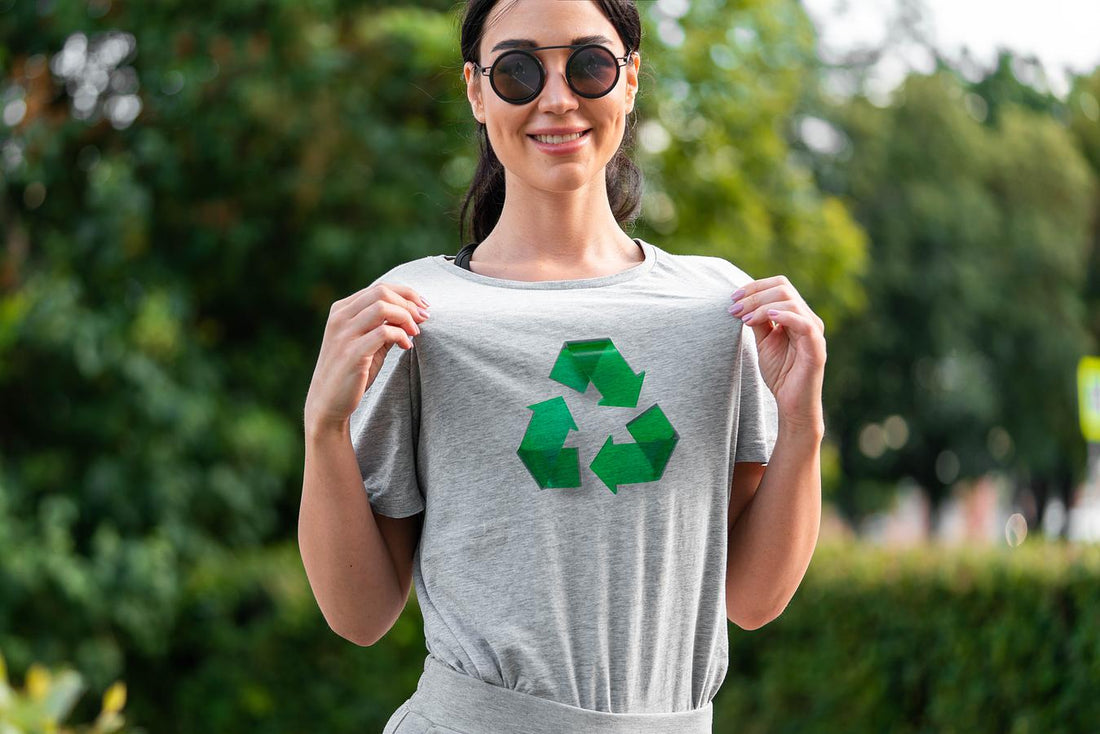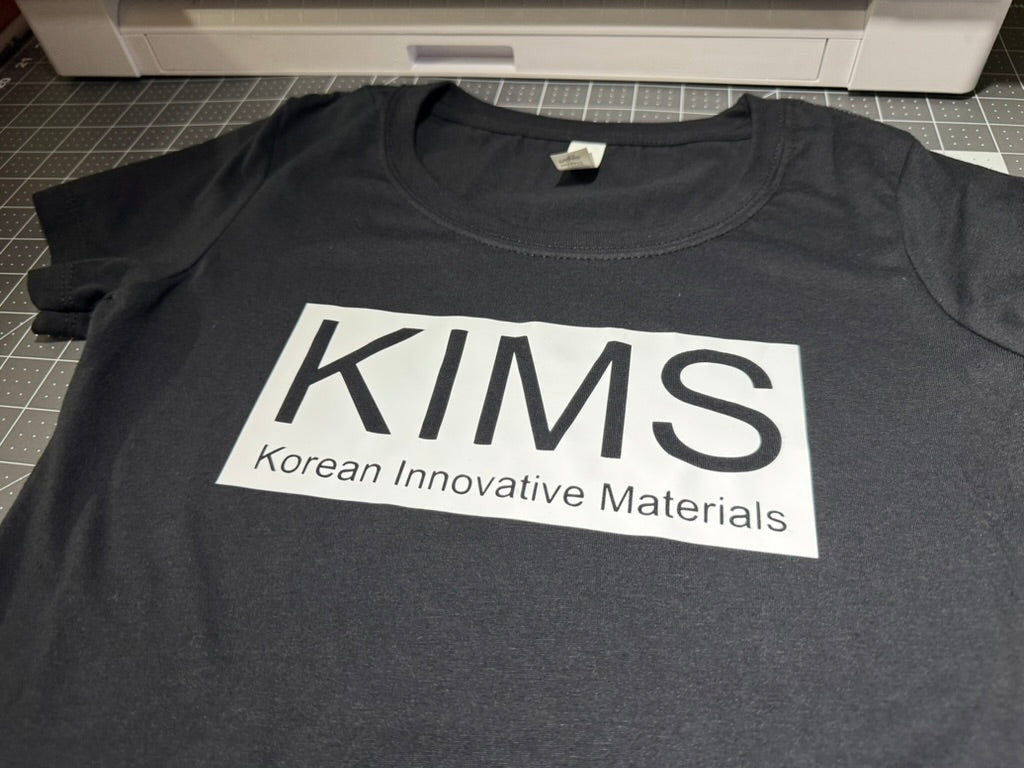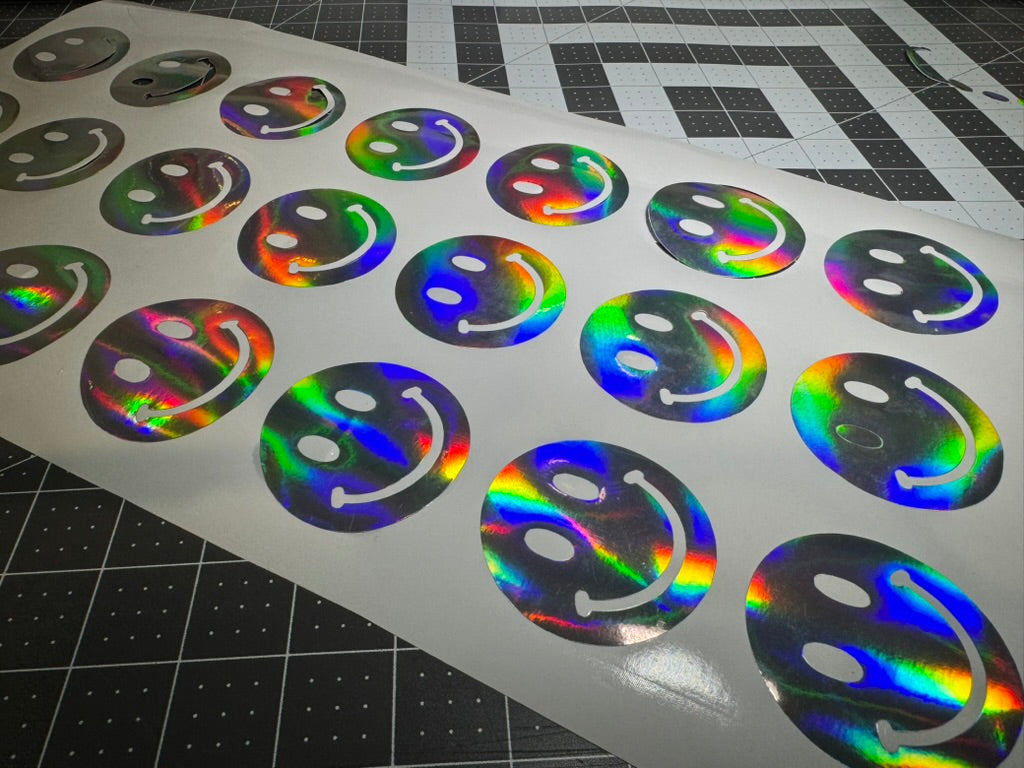Introduction
As more industries explore environmentally responsible options, heat transfer vinyl (HTV) is also evolving. Many creators and businesses are now looking for materials that help reduce waste, energy use, and harmful chemicals.
Understanding what qualifies HTV as eco-friendly involves looking at how it's made, what it's made from, and how it behaves during and after use. Not all vinyl is created the same, and some materials have a much lower impact on the environment than others.
This guide explains what makes certain HTV products more sustainable than traditional options. It also covers the types of eco-friendly vinyl available and how to compare them based on environmental impact.
What Makes Heat Transfer Vinyl Eco-Friendly
In the context of heat transfer vinyl, "eco-friendly" refers to materials and production methods that reduce harm to the environment. This includes using safer chemical formulations, generating less waste during manufacturing, and creating products that are easier to recycle or dispose of responsibly.
Traditional HTV is often made from PVC (polyvinyl chloride), which contains chlorine and other additives that can release harmful substances. PVC is also difficult to recycle and doesn't break down easily in landfills.
Eco-friendly HTV alternatives focus on replacing PVC with less harmful base materials. One of the most common substitutes is polyurethane (PU). PU-based vinyl doesn't contain chlorine or plasticizers and breaks down more cleanly. It also produces fewer emissions during manufacturing.
"The shift toward PU-based materials represents one of the biggest advancements in sustainable heat transfer vinyl technology."
Other sustainable features may include:
-
Water-based adhesives instead of solvent-based ones
-
Phthalate-free formulations
-
Reduced packaging waste
-
Energy-efficient production systems
Polyurethane HTV is considered more eco-conscious due to its low toxicity and improved breakdown properties compared to PVC. Its thinner profile also means less material is used per application, contributing to reduced environmental impact.
Types Of Sustainable HTV Options
Eco-friendly heat transfer vinyl comes in several varieties, each with different environmental benefits. Understanding these options helps you choose the right material for your specific needs.
1. Compostable Vinyl
Compostable vinyl breaks down naturally under the right conditions. It contains organic components that decompose in industrial composting facilities where high heat and specific microorganisms are present.
To be labeled as compostable, vinyl must meet established standards like ASTM D6400 or EN 13432. These certifications confirm the material can decompose within about 90 days without leaving toxic residue.
This type works best for short-term or promotional items where long-term durability isn't required. It may not withstand frequent washing or extended use.
2. PVC-Free Vinyl
PVC-free vinyl eliminates the chlorine and harmful additives found in traditional vinyl. It's made with alternative polymers like polyurethane (PU) or other non-chlorinated materials.
Environmental benefit: Reduces the release of dioxins and other toxins, making it safer for both the environment and production teams.
Performance: Often matches traditional options in flexibility, adhesion, and color quality.
This type is ideal for applications where non-toxic materials matter most, such as baby clothing, athletic wear, or products for sensitive skin.
3. Bio-Based And Recycled Vinyl
Bio-based vinyl comes from renewable sources like corn starch or sugar cane instead of petroleum. Recycled vinyl uses post-consumer or post-industrial waste materials.
Some products combine both approaches, using a mix of renewable and recovered materials. The percentage of sustainable content typically ranges from 20% to 80%.
These materials:
-
Reduce dependence on fossil fuels
-
Help divert waste from landfills
-
Work well for promotional apparel and reusable bags
Performance may vary depending on the ratio of sustainable content. Products with higher recycled content might have slightly different texture or cutting requirements.
4. Water-Based Adhesive Vinyl
Water-based adhesive vinyl uses a water-soluble carrier system instead of solvents. This change results in lower emissions of volatile organic compounds (VOCs), improving air quality in production environments.
These adhesives are generally safer to handle and reduce the risk of skin or respiratory irritation. Application may require slightly different heat or pressure settings, but water-based adhesives work with most fabrics.
|
Type |
Environmental Benefits |
Best Applications |
Performance Considerations |
|---|---|---|---|
|
Compostable |
Breaks down in industrial facilities |
Short-term items, promotions |
Limited durability, specific disposal needed |
|
PVC-Free |
No chlorine or dioxins, lower toxicity |
Baby clothes, athletic wear |
Similar to PVC, safer for sensitive use |
|
Bio-Based & Recycled |
Uses renewable or recycled content |
Casual wear, branded merchandise |
May affect texture and cutting settings |
|
Water-Based Adhesive |
Reduces VOCs, safer for workers |
General apparel, indoor products |
May need different heat/pressure settings |
Comparing Eco-Friendly HTV To Traditional Vinyl
When comparing eco-friendly and traditional heat transfer vinyl, several key differences emerge in how they're made, how they perform, and their environmental impact.
Eco-friendly HTV typically avoids harmful chemicals like chlorine and phthalates. It often uses polyurethane (PU), water-based adhesives, or bio-based content. Traditional vinyl, made from polyvinyl chloride (PVC), includes more additives that can harm the environment during production and disposal.
Both types can create vibrant designs, but their physical characteristics may differ:
Environmental Impact:
-
Eco vinyl: Lower emissions during manufacturing, fewer toxic substances
-
Traditional vinyl: Higher environmental footprint due to chlorine content and slow breakdown after disposal
Production Process:
-
Eco vinyl: Often uses water-based adhesives and renewable or recycled content
-
Traditional vinyl: Typically involves fossil fuels, plasticizers, and solvent-based adhesives
Durability:
-
Eco vinyl: Offers good durability but may have different stretch or flexibility properties
-
Traditional vinyl: Has consistent performance but varies by product quality
Application:
-
Eco vinyl: May require more precise heat settings and pressure control
-
Traditional vinyl: Often works with a broader range of equipment settings
Cost:
-
Eco vinyl: Usually has a higher upfront cost
-
Traditional vinyl: Generally less expensive but may have hidden environmental costs
Both eco-friendly and traditional vinyl come in various colors and finishes. However, specialty options like reflective or metallic may look slightly different between the two types. Eco-friendly varieties sometimes have a more natural finish due to different adhesives and pigments.
![Image: Comparison of eco-friendly HTV and traditional vinyl on fabric samples]
Key Factors To Consider When Choosing Eco Vinyl
1. Performance And Durability
When selecting eco-friendly heat transfer vinyl, performance matters just as much as environmental benefits. Quality eco vinyl should maintain its appearance and adhesion through multiple wash cycles.
Wash resistance: Look for products tested for at least 30-50 wash cycles. Better quality eco vinyl maintains color and adhesion even after repeated laundering.
Stretch capability: For athletic wear or stretchy fabrics, choose eco vinyl with good flexibility. Polyurethane-based options typically offer better stretch than other alternatives.
Heat application requirements vary by product. Most eco-friendly vinyl works with standard heat presses, but temperature and time settings may differ from traditional vinyl. Always check the manufacturer's guidelines for specific recommendations.
Fabric compatibility is another important consideration. Some eco vinyl works better on natural fibers like cotton, while others adhere well to polyester or blends. Testing on your specific fabric before a large project saves time and materials.
2. Certifications And Testing
Certifications help verify environmental claims and ensure safety. When choosing eco-friendly HTV, look for these important standards:
-
OEKO-TEX Standard 100: Certifies the vinyl has been tested for harmful substances and is safe for human contact
-
Global Recycled Standard (GRS): Verifies recycled content and responsible production practices
-
ASTM D6400 or EN 13432: Confirms biodegradability and compostability
To verify a product's claims, ask suppliers for certification documentation. Legitimate eco-friendly products have test reports or certification numbers that can be verified through the certifying organization.
Some regions have specific requirements like REACH in Europe or California Proposition 65 in the US. These regulations restrict certain substances in consumer products. Compliant products often display this information on packaging or technical data sheets.
3. Cost And Production Workflow
Eco-friendly vinyl typically costs more than conventional options. This price difference reflects the specialized materials, manufacturing processes, and certification costs. However, comparing only the per-unit price doesn't tell the whole story.
Consider these cost factors:
-
Higher material quality may reduce waste from failed applications
-
Better cutting and weeding properties can save production time
-
Environmental compliance may become a business advantage
Production workflow adjustments might be necessary when switching to eco vinyl. Some materials need different cutting speeds, blade types, or heat press settings. These changes can affect production timelines but often become routine after a short adjustment period.
Most eco vinyl works with standard equipment, but carrier sheet thickness or adhesive properties may influence setup. Testing new materials with your specific equipment helps identify any necessary adjustments before large production runs.
Tips For Applying And Maintaining Eco-Friendly HTV
Working with eco-friendly heat transfer vinyl requires attention to detail during cutting, pressing, and care. These materials often behave differently than traditional vinyl due to their unique compositions.
1. Recommended Cutting And Weeding Practices
Eco-friendly HTV, especially polyurethane or bio-based materials, typically works best with slower cutting speeds and lighter pressure. These settings help maintain fine details without tearing the vinyl.
Blade selection: A standard 45° blade works for most eco vinyls, but thicker or specialty finishes might need a 60° blade. Replace blades regularly to ensure clean cuts.
For weeding, eco vinyl sometimes requires more precision than PVC-based options. The carrier sheet may be less tacky, making small elements shift more easily. Use a fine-tip weeding hook and work under good lighting to see cut lines clearly.
If you encounter cutting problems:
-
Reduce cutting speed for more precise results
-
Adjust blade depth in small increments
-
Test cut a small section before running large designs
2. Proper Heat Application Settings
Eco-friendly vinyl often uses water-based or modified adhesives that activate at lower temperatures than traditional vinyl. Typical application temperatures range from 275°F to 305°F (135°C to 150°C).
Many eco vinyls require a warm or cold peel rather than a hot peel. This allows the adhesive to set properly before removing the carrier. Always check the manufacturer's instructions for the correct peel method.
Heat press machines provide more consistent results than household irons, which is especially important for eco vinyls with specific temperature requirements. If layering designs, press each layer according to its specific instructions and use parchment or Teflon sheets between layers.
3. Washing And Care Routines
To maintain eco-friendly HTV designs, gentle washing works best. Use cold water and mild detergent, avoiding bleach and fabric softeners that can damage the vinyl.
Care tips:
-
Turn garments inside out before washing
-
Air dry or use low heat settings
-
Wait 24 hours after application before the first wash
With proper care, quality eco-friendly HTV maintains its appearance through many wash cycles. If you notice cracking or peeling, it may indicate the vinyl was under-pressed, overheated, or washed too soon after application.
How To Dispose Or Recycle Eco-Friendly HTV Materials
1. Responsible Scrap Collection
Collecting and sorting vinyl scraps properly makes a big difference in their environmental impact. Different types of eco-friendly HTV require different disposal methods.
Start by separating scraps by material type—compostable, recyclable, and non-recyclable. Label collection bins clearly to maintain consistent sorting during production.
Reduce waste by optimizing design layouts. Nesting designs closely together uses less material and creates fewer scraps. Small leftover pieces can become tags, labels, or test patches for future projects.
Waste reduction strategies:
-
Create digital pre-layouts to maximize material use
-
Keep cutting blades sharp to avoid mistakes
-
Store vinyl properly to prevent damage
2. Composting And Recycling Options
Compostable HTV materials need industrial composting facilities to break down properly. These facilities maintain high heat, controlled moisture, and specific microbes that home composting systems typically lack.
Look for certifications like ASTM D6400 or EN 13432 on compostable products. Contact local commercial composting facilities to confirm whether they accept these materials before sending them.
For recyclable vinyl like PU-based or recycled-content products, specialized recycling centers may accept clean, separated scraps. Some manufacturers offer take-back programs where you can return unused or scrap material for proper processing.
To find appropriate disposal options:
-
Check manufacturer websites for recycling programs
-
Contact local textile recyclers about vinyl acceptance
-
Ask vinyl suppliers about take-back options
Moving Forward With Sustainable Transfers
Eco-friendly heat transfer vinyl continues to improve as technology advances. More businesses now include sustainable materials in their production processes, responding to growing customer interest in environmentally responsible products.
Starting with sustainable HTV doesn't require changing everything at once. Many shops begin by offering one or two eco-friendly options alongside traditional materials. This approach allows for testing compatibility with existing equipment and gauging customer interest.
KIMS Direct offers premium eco-friendly heat transfer vinyl that maintains high cutting precision and easy weeding. These materials reduce production time while supporting environmental goals. The collection includes options for various applications, from everyday apparel to specialty projects.
Ready to explore eco-friendly heat transfer vinyl? Check out KIMS Direct's collection at https://kimsdirect.com/collections/all.
FAQs About Sustainable Heat Transfer Vinyl
Does eco-friendly heat transfer vinyl require specialized cutting equipment?
Most eco-friendly HTV works with standard cutting machines, though you might need to adjust settings like blade depth, cutting speed, or pressure depending on the specific material.
How do I dispose of eco-friendly HTV scraps if my local recycling center doesn't accept them?
Some manufacturers offer take-back programs for their vinyl products, or you can contact specialty textile recyclers that handle materials not accepted by regular recycling facilities.
Will eco-friendly heat transfer vinyl designs last as long as traditional vinyl?
Quality eco-friendly HTV from reputable manufacturers offers durability comparable to traditional vinyl, maintaining appearance and adhesion through multiple wash cycles when applied correctly.
What certifications should I look for when purchasing truly sustainable heat transfer vinyl?
Look for OEKO-TEX Standard 100 for non-toxic materials, Global Recycled Standard (GRS) for recycled content, and biodegradability certifications like ASTM D6400 for compostable options.
Can eco-friendly heat transfer vinyl achieve the same specialty effects as traditional vinyl?
Many manufacturers now offer eco-friendly options in specialty finishes including metallic, glitter, and reflective effects, though specific environmental benefits vary between products.







